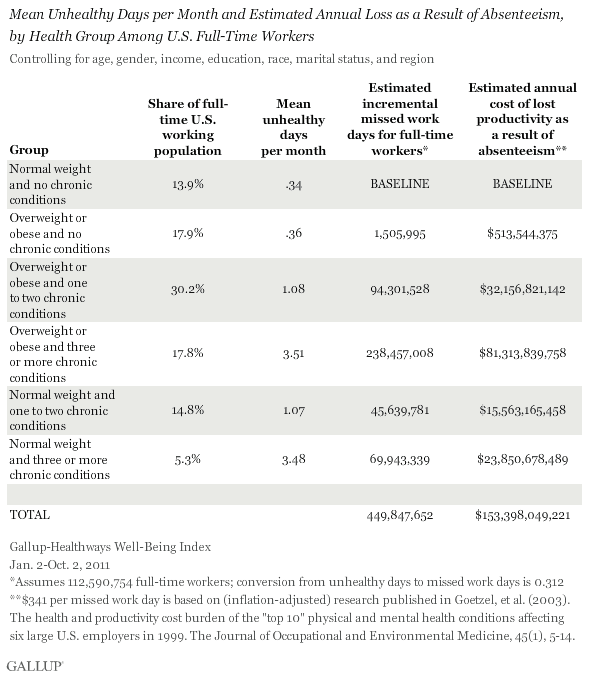Abstract
Absenteeism is a serious problem because it may lower employee motivation, lead to financial losses and damage an organization’s reputation. Many organizations in the United States have not keenly addressed the issue particularly because most of its negative effects are indirect. To employers who are aware of the consequences, absenteeism is irritating especially when organizational goals and objectives are not met. The federal agency is not an exception hence the management should take proactive measures to reduce work absence. Understanding the effects and solutions to the problem is paramount. Investigating the problem within the agency’s working environment will alert the senior management on the severity of the matter and trigger the implementation of the recommended solutions.
Introduction
This report will examine work absences as a serious problem in the workplace. The problem is real and has always been there yet few employers have taken proactive measures to control it. Many have even failed to account for its impacts especially when the number of the achievements exceeds failures in regard to the goals set. Therefore, this ignorance leads to some employees perceiving the habit as the norm and continuing with it. The federal agency needs to wake up and address the problem of absenteeism in order to enhance its performance. In addition, employees with the habit of not reporting to work as required should be made aware of the ensuing consequences and change for their benefit as well as the benefit of the organization at large.
The problem
Work absences fall into two categories – scheduled and unscheduled absences. Scheduled absences are those which an organization has granted such as annual vacations and statutory holidays (European Foundation, 2010). They are beneficial in that an employee can have time to rest or can acquire training which enhance his/her contribution to the organization. Moreover, the scheduling allows an employer to organize for replacements, hence little impact on the overall performance. Similarly, obligatory absences akin to those stemming from by infirmity or kin- allied burden have modest consequences given that they are effortlessly communicated and suitable provisions crafted.
However, unscheduled work absences can be considered unacceptable by employers especially those who form a bigger part of the employee’s livelihood. It is even more irritating when the employee was in a position to avoid it or when it becomes a habit. These absences disrupt the proper working schedule and overall output of the workforce. These unscheduled absences have escalated in almost all sectors making the problem a threat to the whole economy. What heightens the situation is that the problem has been there in history and still continues to pressurize many organizations, yet the employees can be taught how to manage absenteeism. When the problem permeates in all departments, it does not only affect the output, but can even impact on the capacity to sustain the organization in business. When such a situation reaches, the federal agency will indeed fail the government and citizens who are the sources of the salaries paid to its employees.
Negative impacts of absenteeism
Work absences affect almost every person in the agency including the employees who were absent. The absent workers themselves as well as their dependants may get lower income, besides incurring possible extra medical expenses. The agency is affected by direct costs including sick pay, staff replacement costs, overtime in addition to the indirect costs related to consequences of absence on. According to a review carried out by MERCER, a complete outlay of vocation absences is exceptionally momentous and come to nearly thirty six percent of the employees payroll (MERCER, 2008).
Absences will certainly affect employee motivation. Workmates of an absent employee are usually overworked in order to meet deadlines. When this problem is not properly addressed or not addressed at all, the morale of workers can reduce. They can feel that the agency has treated them unfairly, particularly when they perceive the absent worker has got away with it. De Boer, Bakker, Syroit and Schaufeli (2002) conducted a study on 514 security guards and concluded that unfairness at work can result into absenteeism. It can then be argued that improper response to the problem can make it to escalate. Likewise, absences lead to incomplete work hence job dissatisfaction. As Josias (2005) notes, this dissatisfaction will influence an employee’s motivation not to attend.
Absenteeism can also be a sign of a more serious causal problem including stress, harassment, bullying, communication breakdown and overworked workforce. With many legislative elements doing little to address such issues (Cabo, 2009), the absence problem can perforate departments that deal with critical issues such as security and intelligence. The trust citizens and the government have on the agency will ultimately be weakened. As noted earlier, the problem is real and evident in almost all sectors. Studies show that each year workers in the United States miss more than half a billion working days (Nationwide Better Health, 2010). Therefore, it is the responsibility of the agency to ensure that good reputation is maintained and pushed further according to the interests of the stakeholders.
Results and analysis of survey
For this study, a survey was conducted in the workplace to investigate the problem of absenteeism in the federal agency. The sample surveyed involved 39 participants – all were employees from the agency. There were 24 male participants and 15 females from various departments and ranks. Their age groups are shown in the chart below:

The participants responded to a number of survey questions relating to their views and observations on the issue of absenteeism. The results confirmed previous researches on the problem as shown below.
- 96% of the participants had been absent more than twice
- 90% do not consider their absence to have an impact on the agency
- 48% think that their colleagues have no good reason to be absent
- 78% will not like a workmate to be absent
- 76% do not like to be pushed to work simply because a colleague is not around
- 90% believe that some colleagues just escape some duties
- 62% do not like the way the agency tolerates absent workers
- 78% believe that sometimes work is not completed because a workmate was not around
- 80% believe that the situation would not change even if the workforce was increased
- 68% would like the agency to investigate absentees and punish them accordingly
The survey results suggest that approximately half of the absences occur as a result of unknown reasons. It can then be argued that these absences are unscheduled. The other half may occur due to common reasons in the US such as poor health. A study conducted by Gallup showed that poor health is the major cause of absenteeism as shown in the chart below:

Recommendations for the federal agency
Absenteeism is a problem that the federal agency must address in order to enhance the performance of the employees. The first thing to do is to devise ways of monitoring and analyzing its occurrence. With the information available, relevant people can use it to identify problematic areas and act accordingly. The objective here is not to victimize any worker, but rather to understand better the areas that the problem is costing and help leaders to develop strategies that identify and appropriately address the issue. Research has shown that absenteeism can be addressed if the right people are slotted in sympathetically. Otherwise, the problem will only escalate.
Every employee in the agency has unique set of circumstances and situations that may make them not report to work. Understanding these circumstances and coming up with solutions that directly respond to the corresponding causes of absence will take time. Therefore, it will be more effective to outsource the management of the issue or make consultations to assist in developing the most effective ways of dealing with it.
Another important recommendation is for the agency to address problems like stress, harassment, bullying, communication breakdown and overworked workforce. It can develop rules and laws that prohibit these behaviors in addition to bringing awareness to the employees about the effects of such behaviors. The agency can also push regulatory bodies to implement measures that address the issue hence new employees will already be oriented to them.
Conclusion
Absenteeism is a problem that is on the increase, affecting almost all sectors. The issue is particularly sensitive to federal agencies where efficiency in operations is paramount. The federal agency must work to reduce the rate of absenteeism especially when 96% of the employees report to be victims of the issue. Every employee has the right to be absent with a reason, but it is equally important to reciprocate the tax contributions from citizens by giving the services expected. Indeed, every organization would be proud if it meets its goals and objectives as much as an employee would be when the salary given meets all his/her needs. While the agency takes proactive measures on habitual absentees, employees should understand the negative impacts the habit causes not only to the agency but to all stakeholders.
References
Carbo, J. (2009). Strengthening the healthy workplace act—lessons from Title VII and IIED litigation and stories of targets’ experiences. Journal of Workplace Rights, 14(1), 97-120.
De Boer, E., Bakker, A., Syroit, J. & Schaufeli, W. (2002) Unfairness at work as a predictor of absenteeism. Journal of Organizational Behavior, 23(4), 197.
European Foundation for the Improvement of Living and Working Conditions. (2010). Absence from work. Web.
Josias, B. (2005). The relationship between job satisfaction and absenteeism in a selected field service section within an electricity utility in the Western Cape. Web.
MERCER. (2008). The total financial impact of employee absences. Web.
Nationwide Better Health. (2010).Controlling the cost and impact of absenteeism. Web.
